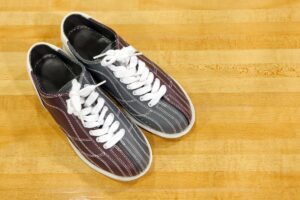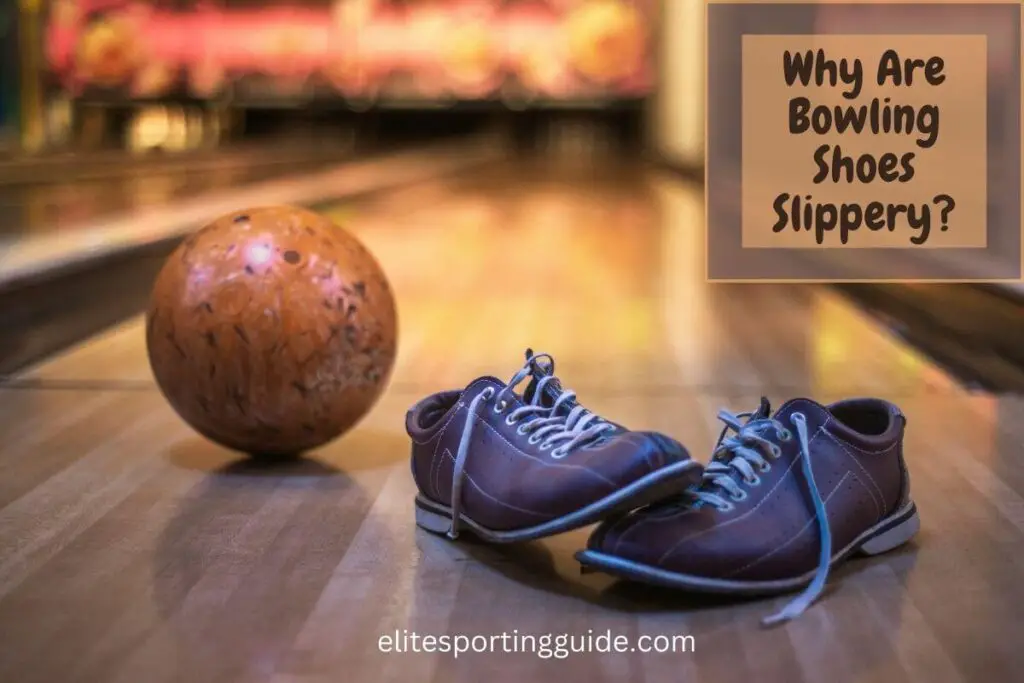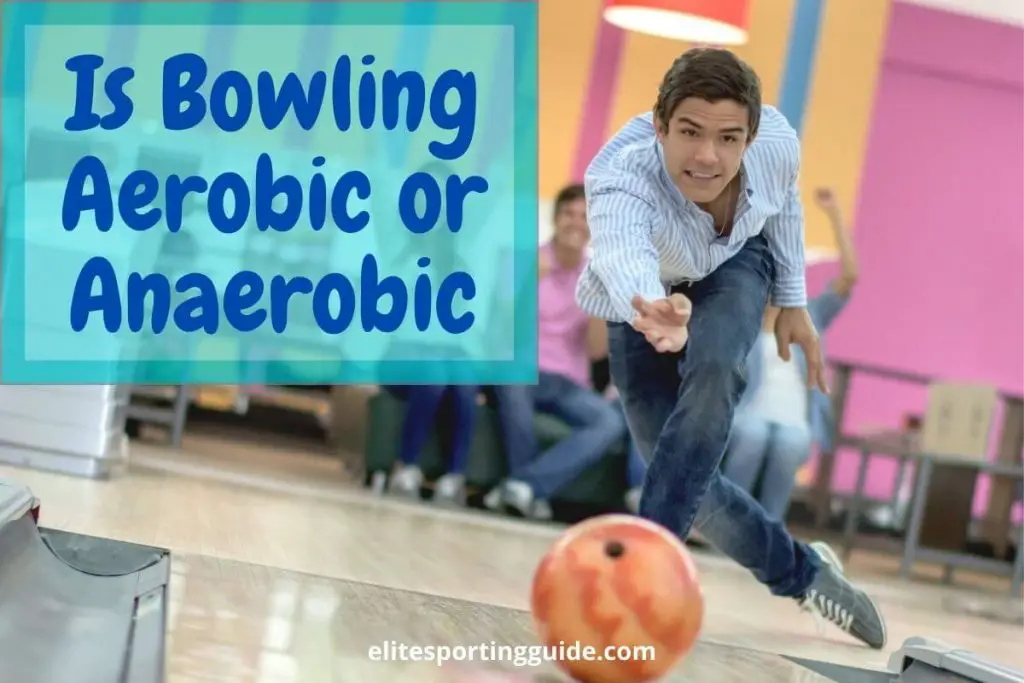It’s no secret that these specially designed shoes provide a unique glide on the bowling lane, allowing bowlers to execute their shots with finesse. But have you ever wondered why bowling shoes are intentionally slippery?
In this article, we peek into the fascinating science behind the slipperiness of bowling shoes, exploring the reasons behind their design and how it enhances a bowler’s performance on the lanes.
So, let’s lace up and uncover the secrets of the bowling shoe slide.
Why Are Bowling Shoes Slippery?
Bowling shoes are deliberately made to be slippery to facilitate a smooth and controlled slide during a bowler’s approach. The soles of bowling shoes, often made of microfiber, reduce friction on the polished surface of the bowling lane, allowing bowlers to maintain a consistent and accurate delivery of the ball.
The Purposeful Design of Bowling Shoes
The purposeful design of bowling shoes is centered around optimizing a bowler’s performance on the lanes. Unlike regular street shoes, bowling shoes are specifically tailored to enhance the bowler’s slide.
They feature smooth soles that minimize friction and allow for a controlled glide during the approach.
By reducing traction, bowlers can achieve a consistent and predictable movement, which is key for accuracy and precision in their delivery.
The functionality of bowling shoes lies in their ability to facilitate the bowler’s slide.
This slide is an essential part of a bowler’s technique, as it helps create a smooth transition between steps and aids in maintaining balance and momentum.
The deliberate slipperiness of bowling shoes enables the bowler to achieve a controlled slide without sticking or losing balance, providing them with the necessary stability and foundation for an effective delivery.
To achieve their purpose, bowling shoes are equipped with specialized soles made from materials such as microfiber.
Microfiber soles are designed to reduce grip on the polished surface of the bowling lane.
This deliberate lack of traction allows bowlers to control their speed and slide more efficiently, minimizing the risk of sudden stops or unwanted movements.
The careful selection of materials in bowling shoe design is critical in striking the right balance between slipperiness and stability, ultimately enhancing a bowler’s performance and overall experience on the lanes.
Enhancing the Bowler’s Slide
Enhancing the bowler’s slide is a key objective in the design of bowling shoes.
The slide is a major component of a bowler’s approach as it enables them to smoothly transition into their delivery and generate momentum.
Bowling shoes are engineered to optimize this slide by incorporating features that reduce friction and promote a controlled gliding motion.
The soles of bowling shoes play a vital role in enhancing the bowler’s slide.
They are designed to be smooth and sleek, minimizing the resistance between the shoe and the bowling lane.
This intentional slipperiness allows the bowler’s foot to effortlessly glide forward, maintaining a consistent and fluid movement.
By reducing friction, bowling shoes enable the bowler to achieve a longer, more controlled slide, facilitating proper timing and positioning for an effective release of the ball.
The materials used in the construction of bowling shoe soles contribute to enhancing the slide.
Many bowling shoes feature soles made from microfiber, a synthetic material known for its low friction properties.
Microfiber soles provide a fine balance between slipperiness and grip, allowing the bowler to slide smoothly while still maintaining some level of control.
This enables bowlers to adapt their slide length and speed based on lane conditions, enhancing their ability to adapt and excel in different environments.
The design of bowling shoes focuses on enhancing the bowler’s slide by minimizing friction and promoting a controlled glide.
The smooth soles and carefully selected materials work together to facilitate a longer and more consistent slide, providing bowlers with the foundation they need to execute their shots with precision and finesse.
The Role of Smooth Soles
The role of smooth soles in bowling shoes is instrumental in facilitating the bowler’s slide and overall performance.
Smooth soles are specifically designed to minimize friction and provide a controlled glide on the bowling lane.
Smooth soles enable bowlers to achieve a consistent and predictable slide during their approach. By reducing friction between the shoe and the lane, smooth soles allow for a smooth transition between steps and help maintain balance and stability throughout the motion.
This controlled glide is essential for achieving proper timing and positioning, leading to more accurate and powerful deliveries.
Furthermore, smooth soles enable bowlers to adapt to different lane conditions. Bowling lanes can vary in terms of surface texture and oil patterns, which can affect the bowler’s slide.
Smooth soles offer versatility by allowing bowlers to adjust their slide length and speed accordingly.
They provide a baseline level of slipperiness that can be further fine-tuned by using different techniques, such as applying sole protectors or interchangeable sole systems, to optimize performance in specific lane conditions.
They contribute to a consistent and predictable slide, aiding bowlers in achieving proper timing and positioning for their deliveries.
Moreover, the adaptability of smooth soles allows bowlers to optimize their performance across a range of lane conditions, enhancing their ability to excel in various bowling environments.
The Importance of Reduced Traction
Reduced traction in bowling shoes holds significant importance in the sport as it allows bowlers to achieve a smooth and controlled slide on the bowling lane.
By intentionally minimizing traction, bowling shoes enable bowlers to execute their approach and delivery with precision and accuracy.
One of the primary reasons for reduced traction is to prevent sticking or abrupt stops during the slide.
If bowling shoes provided excessive grip on the lane, bowlers would experience difficulty in maintaining a fluid motion, potentially resulting in inconsistent deliveries and compromised performance.
The controlled slide facilitated by reduced traction allows bowlers to smoothly transition into their release, ensuring a seamless and efficient delivery of the ball.
Moreover, reduced traction in bowling shoes contributes to the development of proper footwork and balance.
The controlled slide requires bowlers to maintain stability and balance throughout their approach, encouraging them to focus on their technique and maintain proper body alignment.
By minimizing traction, bowling shoes prompt bowlers to rely on their core strength and muscle control to maintain balance, promoting a more refined and consistent delivery.
In addition, reduced traction allows bowlers to adapt to various lane conditions. Bowling lanes can be subject to different oil patterns and surface textures, which can significantly impact the bowler’s slide.
By reducing traction, bowlers can adjust their slide length and speed to accommodate the specific characteristics of the lane, optimizing their performance and adaptability.
The importance of reduced traction in bowling shoes lies in its contribution to a smooth and controlled slide, the development of proper footwork and balance, and the adaptability to different lane conditions.
By minimizing grip and promoting a controlled glide, bowling shoes enable bowlers to execute their deliveries with precision, consistency, and adaptability, ultimately enhancing their overall performance in the sport.
Related post: How Often Do Bowling Alleys Oil Their Lanes?
Microfiber Soles and Slipperiness
Microfiber soles play a key role in the slipperiness of bowling shoes, contributing to the controlled glide and enhanced performance of bowlers on the lanes.
Microfiber, a synthetic material known for its low friction properties, is specifically chosen for its ability to reduce grip and provide optimal slipperiness.
The smooth texture of microfiber soles allows bowlers to experience a consistent and controlled slide.
The low friction properties of microfiber minimize the resistance between the shoe and the bowling lane, enabling the bowler’s foot to glide effortlessly.
This controlled glide helps bowlers maintain proper timing, balance, and positioning, resulting in more accurate and powerful deliveries.
Furthermore, the use of microfiber soles is a deliberate choice which offer a fine balance between slipperiness and grip.
While they reduce traction on the polished surface of the bowling lane, they still provide enough stability for bowlers to maintain control over their slide.
This balance is crucial for bowlers to adapt their slide length and speed based on lane conditions, allowing them to make the necessary adjustments and optimize their performance in different environments.
The Science Behind Bowling Shoe Construction

Bowling shoe construction is rooted in scientific principles that aim to optimize a bowler’s performance on the lanes. Several key elements contribute to the science behind bowling shoe design:
1. Material Selection: The choice of materials used in bowling shoes is imperative. Microfiber, for example, is often selected for the soles due to its low friction properties, which promote a controlled slide.
The upper part of the shoe is typically made from breathable and durable materials to provide comfort and support.
2. Sole Design: The soles of bowling shoes undergo careful engineering to achieve the desired level of slipperiness. They are crafted to minimize friction and reduce traction on the bowling lane.
The shape and contour of the sole are designed to facilitate a smooth and consistent slide, allowing the bowler to maintain balance and control throughout the approach.
3. Interchangeable Soles and Heels: Many modern bowling shoes feature interchangeable soles and heels.
This innovation allows bowlers to customize their shoe’s performance based on lane conditions and personal preferences.
Different combinations of sole and heel materials can be selected to achieve varying degrees of slide and grip, enhancing adaptability and performance.
4. Shoe Fit and Support: Proper fit and support are essential for maximizing a bowler’s performance. Bowling shoes are designed to provide a secure and comfortable fit, ensuring stability during the approach and delivery.
Supportive features, such as padded collars and cushioned insoles, help reduce fatigue and improve overall comfort.
5. Shoe Weight and Balance: Bowling shoes are typically designed to be lightweight to minimize strain and maximize agility.
The weight distribution and balance of the shoe are carefully considered to promote proper body alignment and footwork, allowing bowlers to execute their shots with optimal control and power.
The science behind bowling shoe construction involves material selection, sole design, interchangeable components, shoe fit and support, and weight distribution.
By incorporating scientific principles into their design, bowling shoes aim to enhance a bowler’s performance, providing them with the necessary tools for a controlled slide, adaptability and overall comfort.
Related post: What Shoes Can You Wear Bowling?



